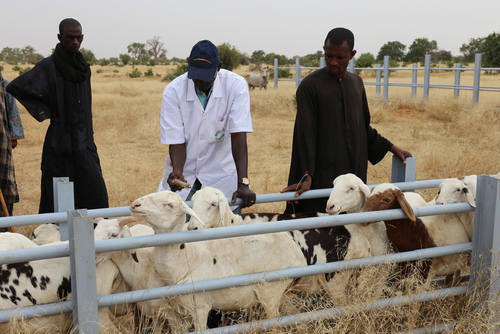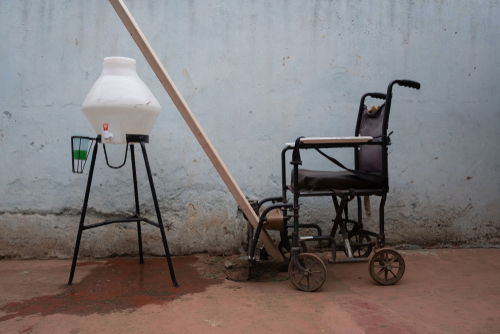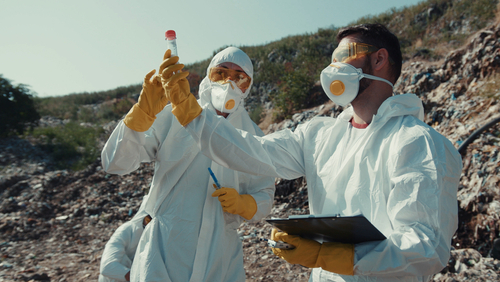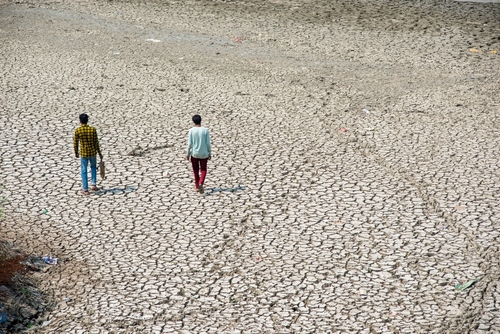April 19, 2023

Infrastructure deficiencies result in poor timeliness and completeness of disease reporting in Uganda.
Weekly surveillance data on infectious diseases in Uganda in 2020 and 2021 were analyzed to determine the timeliness and completeness of disease surveillance reporting through the DHIS2, an online platform for national health data collection and analysis. National averages of reporting timeliness and completeness did not change between 2020 and 2021 and remained below the 80 percent target. While 8 out of 15 health regions achieved the target of 80 percent or greater regarding data completeness, none of the regions could reach this target for reporting timeliness. Changes to the reporting software and data transmission issues may have caused an underestimation of surveillance data. This warrants infrastructure enhancements to improve the generally poor timeliness and completeness of disease surveillance reporting. [BMC Public Health]
One Health groups fail to prioritize interdisciplinary collaboration.
Researchers mapped the global distribution of One Health Networks (OHNs), defined as One Health-centered collaborations between two or more organizations or entities, and analyzed gaps in OHN formation. Approximately 43 and 42 percent of OHNs are active in Europe and Africa, respectively. OHNs operating globally are most prevalent in Europe (40 percent) or North America (21 percent), indicating that global OHN leadership happens primarily in high-income countries. Only 60 percent of OHNs engaged in all three sectors of One Health (human, animal, and environmental health). OHNs must expand their efforts to work with other sectors and depend on domestic funding rather than external donations to foster a more inclusive and equitable approach to One Health. [The Lancet]
The majority of Ethiopian households are unable to access latrines and other sanitation services.
A spatial analysis of households’ access to sanitation services in Ethiopia conducted between March and June 2019 identified hotspots of poor access and factors associated with increased access to these services. The analysis revealed that 19.7 percent of Ethiopian households had access to improved sanitation services; however, most households (72.24 percent) solely practiced open defecation, and nearly one-fifth of participating households had no access to sanitation facilities at all. Households with poor sanitation access were clustered in a non-random manner, and rural households were 68 percent more likely than urban households to access sanitation services. Other factors, such as higher economic status, media exposure, and sharing toilet facilities, were associated with increased access to appropriate sanitation services. [PLOS Global Public Health]
Southeast Asia bears the brunt of harmful human-climate interactions.
A new article highlights the vulnerability of countries in Southeast Asia to the detrimental effects of interactions between humans and the environment. Citing the increased frequency of flooding in Southeast Asia being temporally correlated with a rise in infectious diseases such as cholera, the authors draw attention not only to the environmental impacts on human health but also to humans encroaching on wildlife habitats and contributing to global warming. Southeast Asia experiences a mostly tropical climate, increasing the region’s climate and weather stress and risk of emerging zoonoses. The One Health approach is critical to reverse the effects of climate change and protecting vulnerable communities in Southeast Asia from infectious diseases. [New Microbes and New Infections]
Global Accelerator for Paediatric Formulations Network helps define pediatric antibiotic use.
The World Health Organization convened and facilitated a pediatric drug optimization exercise to prioritize the development of pediatric formulations of antibiotics (existing or in the pipeline) targeting infections with significant public health importance. Antibiotics comprised formulations in the priority and watch list for investigation and development in the short (3-5 years) and long term (5-10 years). Antibiotics on the priority list included amoxicillin-clavulanic acid, nitrofurantoin, azithromycin, cefiderocol, while those in the watch list included cefepime-taniborbactam and sulbactam-durlobactam. [WHO]
High disease burden associated with contaminated dairy products in Rwanda.
Researchers evaluated the disease burden of foodborne pathogens found in raw milk and other dairy products in Rwanda. The burden of Campylobacter spp. in Rwanda was approximately double its burden globally, and the burden of three of the other four pathogenic threats investigated was significantly higher than the global average. Most dairy-attributable cases of foodborne pathogens originated in milk from cattle, whereas less than half of Campylobacter spp. cases were attributed to fermented dairy products. Overall, consuming contaminated dairy products was associated with 57,500 cases of illness, 55 deaths, 3,870 DALYs, and a cost of US$3.4 million in 2010. [BMC Public Health]
Two-dose childhood varicella vaccination is financially and clinically effective.
A cost-effectiveness analysis of two-dose universal varicella vaccination strategies (UVV) in Denmark targeting varicella and herpes zoster burden showed that all strategies tested resulted in a 94-96 percent reduction in varicella cases. Furthermore, there was a 93-94 percent reduction in hospitalizations and a 91-92 percent reduction in varicella deaths over 50 years. All strategies were cost-effective compared to no vaccination, with the medium-interval strategies being the most effective from both payer and societal perspectives. [PLOS Global Public Health]
Early childhood lower respiratory tract infections are linked to a greater risk of premature adult death from respiratory disease.
The association between early childhood lower respiratory tract infections (LRTIs) and premature adult death from respiratory disease in England, Scotland, and Wales was assessed in a longitudinal cohort study. Of the 3,589 participants in the study, one-fourth who had an LRTI in their early childhood had a greater risk of dying from respiratory disease by the age of 73 than those who did not experience early childhood LRTI. Overall, experiencing LRTI before the age of two was linked to a two-fold increase in the risk of premature death in adulthood from respiratory disease. [The Lancet]
Sensitivity and resistance profiles among malaria parasites in Cameroon have shifted over the past two decades.
Resistance to antimalarial agents is one of the greatest threats to global malaria control and mitigation strategies today. Researchers investigated how antimalarial drug resistance markers had changed 16 years after adopting artemisinin-based combination therapies (ACTs) in Yaounde, Cameroon. Surveillance studies conducted post-ACT implementation showed a reduced prevalence of Pfcrt and Pfmdr1 mutant alleles associated with chloroquine (CQ), amodiaquine, and lumefantrine resistance, indicating a gradual reversion to CQ sensitivity. On the contrary, increasing frequencies of mutations conferring resistance to diaminopyrimidine and sulfa drugs warrant continuous monitoring and surveillance. [International Journal of Infectious Diseases]
End of the Bedaquiline patent in India – a move towards more accessible treatments in the future.
Johnson & Johnson’s drug bedaquiline is a novel, effective treatment for multidrug-resistant tuberculosis (MDR-TB). Recently, India’s patent office rejected the company’s request for a four-year extension of its patent on bedaquiline, effectively removing its monopoly on the drug. This move allows other companies to produce additional versions of bedaquiline, lowering the price and expanding access for many more MDR-TB patients. Scientists hope that this decision sets a precedent to make access to other life-saving therapies equitable worldwide. [International Journal of Infectious Diseases]
Image from Canva.











